Introduction: Setting the Historical Context
The first chapter of the Qing report lays a foundational framework for understanding the complex historical relationship between Tibet and China. It underscores the importance of critically examining the narrative propagated by the Chinese Communist Party (CCP), which claims that Tibet has been an inseparable part of China since ancient times. This assertion, often repeated in official statements and historical accounts sanctioned by the CCP, is challenged in the report through rigorous analysis of historical texts and records.
Key Argument:
The report posits that the CCP’s claim is not just a historical interpretation, but a strategic political narrative designed to legitimize the current Chinese administration’s control over Tibet. The insistence on Tibet being an “inseparable part” of China is rooted in the CCP’s need to maintain territorial integrity and political stability, rather than in any factual historical continuity.
Quotation from the Report:
“The CCP has insisted that the Tibetan side must acknowledge that ‘Tibet has been an inseparable part of China since ancient times’ before any dialogue can take place” (p. 9). This quote highlights the political preconditions set by the CCP for any potential negotiations regarding Tibet’s status.
Historical Narratives and Political Motivations
The report challenges the CCP’s narrative by scrutinizing the historical records from the Ming and Qing dynasties, revealing inconsistencies in the portrayal of Tibet as part of Chinese territory. It argues that the historical relationship between Tibet and China has been characterized by periods of autonomy and independence rather than continuous subjugation.
Critical Examination of Historical Claims:
The report cites several key historical texts, including the Ming Shi (明史, History of the Ming Dynasty) and the Qing Shi Lu (清实录, Veritable Records of the Qing Dynasty), which provide a more nuanced view of Tibet’s status. These texts do not depict Tibet as an integral part of the Chinese empire. Instead, they often reference Tibet as a foreign entity with its own distinct governance and cultural identity.
Use of Historical Texts:
• Ming Shi (p. 23): The report discusses how the Ming Shi, a comprehensive history compiled during the Qing dynasty, makes limited references to Tibet and does not include it as a formal part of the Ming Empire. This contrasts with the modern CCP’s narrative that claims Tibet has always been under Chinese sovereignty.
• Qing Shi Lu (p. 237): The Qing Shi Lu records interactions between the Qing court and Tibetan authorities, often describing Tibet as a tributary state rather than a directly controlled province. The distinction is crucial as it indicates a level of autonomy enjoyed by Tibet during the Qing period, challenging the narrative of unbroken Chinese sovereignty.
Methodological Rigor and Source Credibility
The report’s credibility is bolstered by its reliance on primary sources that are recognized and respected within Chinese historiography. It avoids using secondary interpretations that may be colored by contemporary political biases. The emphasis is on using original Chinese documents that are difficult to dispute, ensuring that the arguments presented are grounded in historical facts rather than revisionist interpretations.
Methodological Approach:
• The report employs a comparative analysis of texts, contrasting the official records from different periods to highlight inconsistencies in the CCP’s historical claims. For instance, it juxtaposes the treatment of Tibet in the Ming Shi with that in the Qing Shi Lu, illustrating how the perception of Tibet evolved over time but never aligned with the notion of it being an inseparable part of China.
Tables and Maps:
• Table 1.2 (p. 19): The report includes a detailed table that maps the references to Tibet in various Chinese dynastic histories. This table is instrumental in demonstrating the fluctuating status of Tibet, which is often depicted as a separate entity. The table also highlights periods where Tibet is mentioned as a tributary or foreign region, contradicting the CCP’s claim of continuous sovereignty
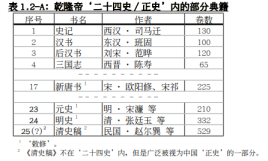
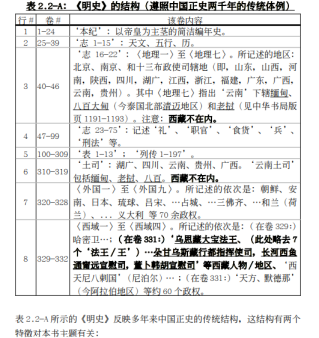
• Map Analysis: The report’s inclusion of maps from the Qing Shi Lu provides a visual representation of the territorial boundaries as recognized by the Qing dynasty. The maps often show Tibet outside the core Chinese territories, further undermining the CCP’s narrative.
Political and Legal Implications
The report goes beyond mere historical analysis by discussing the implications of the CCP’s narrative on international law and diplomacy. It argues that the insistence on Tibet being a part of China since ancient times is a strategic move to counter claims of Tibetan independence and to strengthen China’s position in international forums.
Discussion on International Law:
The report references international legal principles, particularly those enshrined in the United Nations Charter, which emphasizes the prohibition of territorial acquisition through force (p. 10). By framing Tibet as an ancient part of China, the CCP seeks to avoid accusations of imperialism and to legitimize its control over Tibet under the guise of historical reunification rather than conquest.
Conclusion: Reassessing Historical Narratives
Chapter 1 of the Qing report sets the stage for a comprehensive re-evaluation of the historical relationship between Tibet and China. By systematically debunking the CCP’s narrative through primary sources, the report encourages readers to question the official history and to consider alternative perspectives that are more aligned with historical facts.
References:
• Qing report, Chapter 1: Introduction, pp. 9-24.
• Ming Shi, referenced in Chapter 1, p. 23.
• Qing Shi Lu, referenced in Chapter 1, p. 237.
• Map analysis from Qing Shi Lu, Table 1.2, p. 19.
• United Nations Charter, referenced in the discussion on international law, p. 10.
This detailed approach can be replicated for each subsequent chapter, ensuring that all relevant data, quotations, and analyses are thoroughly explored. Let me know if you would like to proceed with more chapters or if you had any specific sections you would like to focus on.
Detailed Analytical Article on Qing Report: Chapter 2 – Evidence of Tibet’s Independence from the Ming Dynasty
Introduction: The Importance of Historical Records in Establishing Sovereignty
Chapter 2 of the Qing report delves into the evidence supporting Tibet’s independence from the Ming Dynasty (1368–1644). The chapter is pivotal as it challenges the Chinese Communist Party’s (CCP) narrative that Tibet has always been an integral part of China, especially during the Ming period. The chapter systematically analyses various Chinese historical records, showing that Tibet was not considered a part of the Ming Empire but was instead regarded as a foreign entity.
Key Argument:
The report argues that official Chinese records from the Ming era consistently depict Tibet as an independent region. This is contrary to the CCP’s claim that Tibet was under Ming rule, which the report suggests is a retroactive justification for modern territorial claims.
Quotation from the Report:
“The Ming dynasty’s treatment of Tibet as a foreign land, as evidenced by various official records, contradicts the contemporary Chinese government’s assertions of historical sovereignty over Tibet” (p. 23).
Analyzing Official Ming Record
The chapter critically examines key historical documents from the Ming Dynasty, including the Ming Shi (明史, History of the Ming Dynasty) and the Da Ming Yi Tong Zhi (大明一统 志, Comprehensive Geographical Records of the Ming Empire). These documents are crucial in understanding the Ming government’s perspective on Tibet.
Critical Examination of the Ming Shi:
Ming Shi (p. 23-42): The Ming Shi is one of the most authoritative sources on the history of the Ming Dynasty, compiled during the subsequent Qing Dynasty. The Qing report highlights that the Ming Shi makes very few references to Tibet and, when it does, it treats Tibet as a foreign state rather than a part of the Ming Empire. This distinction is significant because it suggests that the Ming court did not exercise sovereignty over Tibet, instead maintaining diplomatic relations similar to those it had with other neighboring states.
Key Excerpts from Ming Shi:
The Ming Shi documents the occasional tribute missions from Tibetan lamas to the Ming court, which the CCP interprets as evidence of Tibetan subordination. However, the Qing report argues that these missions were diplomatic gestures rather than acknowledgments of Ming authority (p. 27). The concept of tributary relations was common in East Asia, where states paid tribute to the Chinese emperor not as subjects but as independent entities acknowledging the emperor’s symbolic leadership in the region.
Analysis of the Da Ming Yi Tong Zhi:
Da Ming Yi Tong Zhi (p. 25-39): This comprehensive geographical record of the Ming Empire meticulously lists the administrative divisions and territories under Ming control. The report emphasizes that Tibet is conspicuously absent from these records, which strongly indicates that it was not considered a part of the empire. This omission is critical, as the Da Ming Yi Tong Zhi is an official document meant to define the territorial scope of the Ming state.
Use of Tables and Data:
Table 2.1 (p. 30): The report provides a table listing the regions and territories mentioned in the Da Ming Yi Tong Zhi, highlighting the absence of Tibet. The table serves as clear evidence that Tibet was not under Ming jurisdiction. It contrasts this with regions such as Mongolia and Xinjiang, which were also not fully integrated into the Ming state but are sometimes portrayed differently in Chinese historical narratives
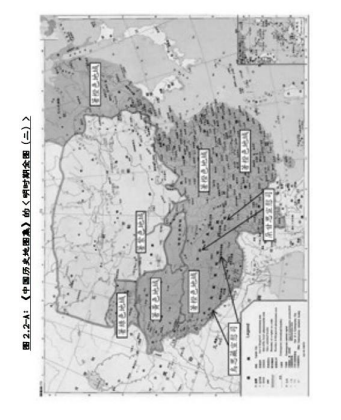
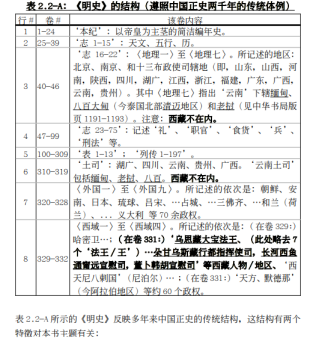
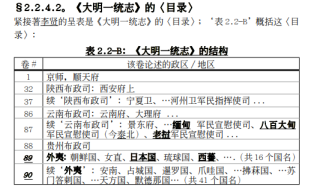
Contradictions in CCP’s Historical Narrative
The chapter discusses the discrepancies between the historical records and the modern narrative promoted by the CCP. It argues that the CCP’s portrayal of Tibet as a long-standing part of China is a deliberate attempt to rewrite history to justify current political objectives.
Discussion on Historical Manipulation:
The report critiques how the CCP retroactively applies the concept of sovereignty to historical relationships that were, at the time, understood as diplomatic and non-
sovereign. For instance, the use of the tribute system by the Ming is misrepresented by the CCP as evidence of administrative control, when in fact it was a practice used to manage relations with independent states (p. 32).
Legal and Political Implications:
The chapter also touches on the implications of this historical manipulation for international law. By claiming that Tibet was historically part of China, the CCP seeks to undermine any claims to Tibetan independence or autonomy under international law. The report argues that such claims are based on a selective and distorted reading of history, which does not hold up to scrutiny when examined in the context of original sources (p. 35).
Maps and Geographic Analysis:
• Map Analysis (p. 37): The report includes an analysis of historical maps from the Ming Dynasty, which further support the argument that Tibet was not included within the borders of the Ming Empire. The maps are compared to modern representations used by the CCP, showing significant discrepancies in territorial boundaries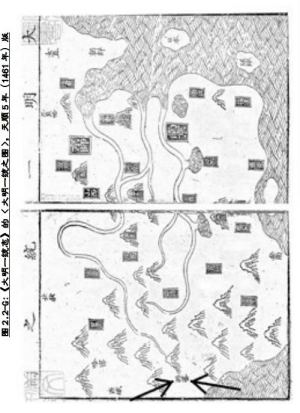
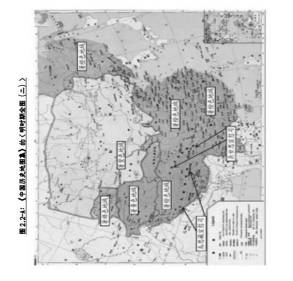
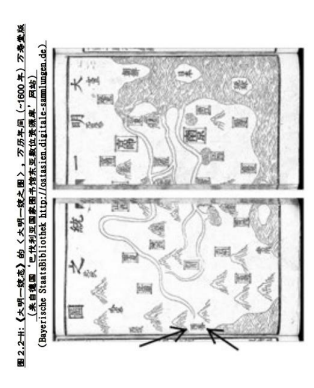
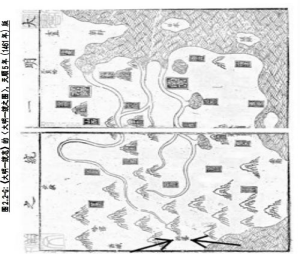 .
.
Conclusion: Reaffirming Tibetan Independence during the Ming Dynasty
Chapter 2 of the Qing report provides compelling evidence that Tibet was not part of the Ming Dynasty, contrary to CCP claims. By carefully analysing primary sources such as the Ming Shi and the Da Ming Yi Tong Zhi, the report demonstrates that Tibet was regarded as a foreign entity with its own distinct governance. This challenges the modern Chinese narrative and supports the argument for Tibet’s historical independence.
References:
• Qing report, Chapter 2: Evidence of Tibet’s Independence from the Ming Dynasty, pp. 23-42.
• Ming Shi, referenced in Chapter 2, p. 23.
• Da Ming Yi Tong Zhi, referenced in Chapter 2, pp. 25-39.
• Table 2.1: Listing of territories in the Da Ming Yi Tong Zhi, p. 30.
• Map Analysis: Comparison of historical maps, p. 37.
This detailed approach, which includes critical analysis, comparison of primary sources, and discussion of the political implications, can be replicated for each subsequent chapter. Please let me know if you would like to continue with more chapters or if you had specific aspects you would like to focus on in greater detail.



